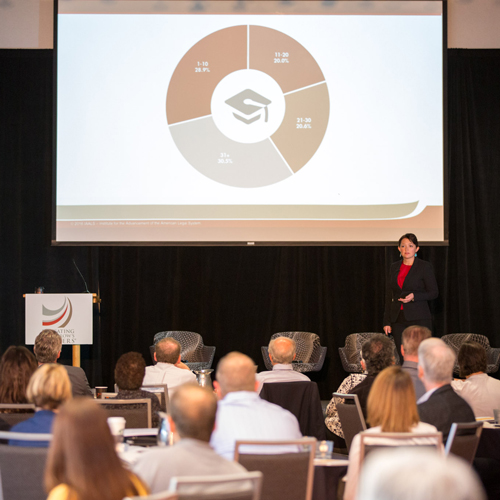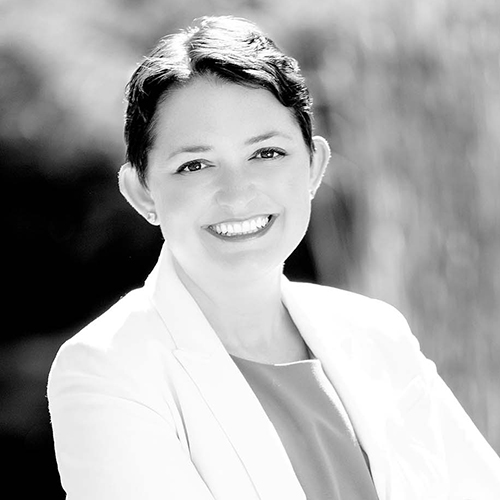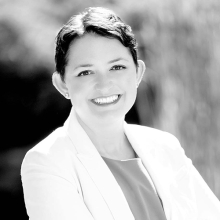Closing the Gap Between Thinking Like a Lawyer and Being One
 Last month, we gathered legal educators, practitioners, and judges from across the country for—wait for it—our 5th Annual Educating Tomorrow’s Lawyers Conference.
Last month, we gathered legal educators, practitioners, and judges from across the country for—wait for it—our 5th Annual Educating Tomorrow’s Lawyers Conference.
As we kicked off the conference on the first day of fall, we reflected on the meaning of harvest.
Harvest is a time to gather and appreciate everything you have cultivated. This was the fifth annual conference, which means we are also in our fifth year of Educating Tomorrow’s Lawyers, so we have been doing some reflection and appreciation.
In 2011, IAALS launched ETL. It evolved from an initiative at Stanford Law School and began with a strong commitment to methods of legal education that embodied the spirit of the Carnegie report, which called for integrating “the three apprenticeships” of legal education: doctrine, professional identity, and practical skills. ETL sought to provide a forum for innovative legal educators to develop and champion improved models of legal education.
Today, our robust network of legal educators is evidence that Educating Tomorrow’s Lawyers achieved that goal. And the development of that network has, over the last few years, allowed IAALS to develop and grow the work of ETL beyond where we started—beyond the development of a network of legal educators.
For example:
- In 2013, we launched Law Jobs: By the Numbers, a tool that provides prospective law students with transparent and complete information about law school employment outcomes.
- In 2014, we convened a group of leaders from the legal profession and launched Foundations for Practice to identify the foundations entry-level lawyers need to practice.
- In 2015, we published “Ahead of the Curve,” which evaluated the Daniel Webster Scholar Honors Program at the University of New Hampshire and found that experiential education plus formative assessment plus collaboration with the bench and bar was producing new lawyers who were ahead of the curve.
- In 2015, we completed a national survey of more than 24K lawyers as part of our Foundations for Practice project.
- And in 2016, we began publishing the results of that survey.
Underlying these accomplishments is another—and it informs where we go from here. As we continued to develop a network of legal educators, we also began to develop a network of legal employers and professionals. Over the last few years, we have worked closely with legal employers from a variety of practice settings and with leaders of the ABA, NABE, NCBP, state bar organizations, and more.
It is, in part, through these networks—and through the collaboration across these networks—that we see our path forward.
Thanks to Foundations for Practice, we now know the foundations of success for new lawyers. As schools charged with educating professionals, law schools must find ways to ensure their graduates have those foundations. In turn, legal employers must commit to hire new lawyers based on the foundations they have identified as necessary.
As it turns out, we cannot change legal education without changing the system that is used to evaluate and hire new lawyers. And we cannot change the system that is used to evaluate and hire new lawyers without changing legal education.
While some might see that as an unsolvable dilemma, we know better because we have seen better from our partners across the country as they work together toward solutions. As we move forward, Foundations for Practice will create opportunities to bring employers and law schools together to identify learning outcomes, to evaluate learning outcomes, and to hire on learning outcomes.
Through our survey, 24,000 lawyers identified the foundations entry-level lawyers need. We believe those foundations should inform law school learning outcomes. We also believe law schools should view learning outcomes as much more than ABA requirements or internal metrics. Learning outcomes can and should be signals to employers—signals as clear as the traditional signals, like class rank and prestige of law school.
As we embark on the next five years of Educating Tomorrow’s Lawyers, we will harness the Foundations for Practice to close the gap between school and career, between credentials and capabilities, between thinking like a lawyer and becoming one.


